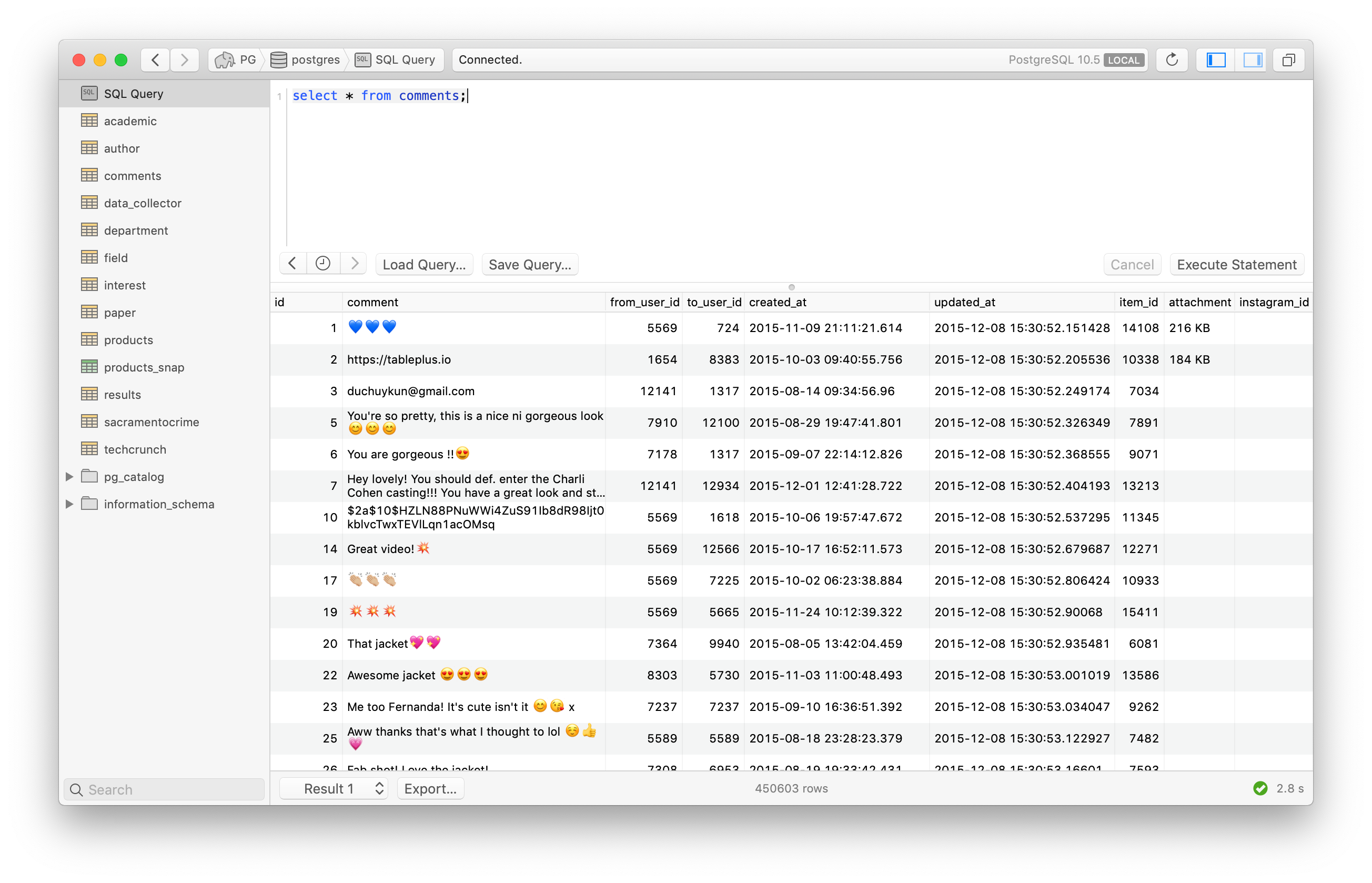DBeaver Overview
DBeaver is a free, open source multiplatform database management tool and SQL client for developers and database administrators. DBeaver can be used to access any database or cloud application that has an ODBC or JDBC driver, such as Oracle, SQL Server, MySQl, Salesforce, or MailChimp. Devart DBeaver provides you with the most important features you'd need when working with a database in a GUI tool, such as:
- SQL queries execution
- Metadata browsing and editing
- SQL scripts management
- Data export/import
- Data backup
- DDL generation
- ER diagrams rendering
- Test data generation
- BLOB/CLOB support
- Database objects browsing
- Scrollable resultsets
Dbeaver Ce Mongodb Net

- There is a very good SQL client solution for Linux users DBeaver. In spec, it is said that it supports MongoDB and Redis databases. However, there are no such drivers in 'New connection' window. Does anyone know how to connect to Mongo or Redis?
- DBeaver Community Edition. DBeaver CE is a popular open-source desktop application for working with SQL-databases. It supports all popular databases: MySQL, PostgreSQL, SQLite, Oracle, DB2, SQL Server and others. Look at DBeaver CE.
MacOS DMG – just run it and drag-n-drop DBeaver into Applications. Debian package – run sudo dpkg -i dbeaver.deb. Then execute “dbeaver &”. RPM package – run sudo rpm. MacOS DMG – just run it and drag-n-drop DBeaver into Applications. Debian package – run sudo dpkg -i dbeaver.deb. Then execute “dbeaver &”. RPM package – run sudo rpm -ivh dbeaver.rpm.
The tool comes in two editions — Community and Enterprise. Enterprise Edition supports NoSQL databases, such as MongoDB or Cassandra, persistent query manager database, SSH tunneling, vector graphics (SVG) and a few other enterprise-level features. Note though that you can access a MongoDB database from DBeaver Community Edition using the respective Devart ODBC driver. For the purposes of this guide, we'll use the Community Edition of DBeaver to retrieve data from MongoDB via the Open Database Connectivity driver.
Creating an ODBC Data Source to Use MongoDB Data in DBeaver

Dbeaver Ce Mongodb Download
- Click the Start menu and select Control Panel.
- Select Administrative Tools, then click ODBC Data Sources.
- Click on the System DSN tab if you want to set up a DSN name for all users of the system or select User DSN to configure DSN only for your account.
- Click the Add button and double-click Devart ODBC Driver for MongoDB in the list.
- Give a name to your data source and set up the connection parameters.
- Click the Test Connection button to verify that you have properly configured the DSN.
Dbeaver Ce Mongodb Portal
When using ODBC driver for MongoDB with DBeaver, SQL_WVARCHAR data types may be displayed incorrectly in DBeaver. To prevent this, you need to set the string data types to Ansi either in the Advanced Settings tab of the driver configuration dialog or directly in the connection string (String Types=Ansi) — all string types will be returned as SQL_CHAR, SQL_VARCHAR and SQL_LONGVARCHAR.
Dbeaver Ce Mongodb Online
Connecting to MongoDB Data from DBeaver via ODBC Driver for MongoDB
Follow the steps below to establish a connection to MongoDB in DBeaver.

- In the Database menu, select New Database Connection.
- In the Connect to database wizard, select ODBC and click Next.
- Enter the previously configured DSN in the Database/Schema field.
- Click Test Connection. If everything goes well, you'll see the Success message.

Viewing MongoDB Database Objects and Querying Data
You can expand out the database structure in DBeaver's Database Navigator to visualize all the tables in MongoDB database. To view and edit the data in a table, you need to right-click on the target table name and select View data.The content of the table will be displayed in the main workspace.
If you want to write a custom SQL query that will include only the necessary columns from the table, you can select New SQL Editor in the SQL Editor main menu. Create your query and run it by clicking Execute SQL Statement to view the results in the same window.
| © 2015-2021 Devart. All Rights Reserved. | Request Support | ODBC Forum | Provide Feedback |
